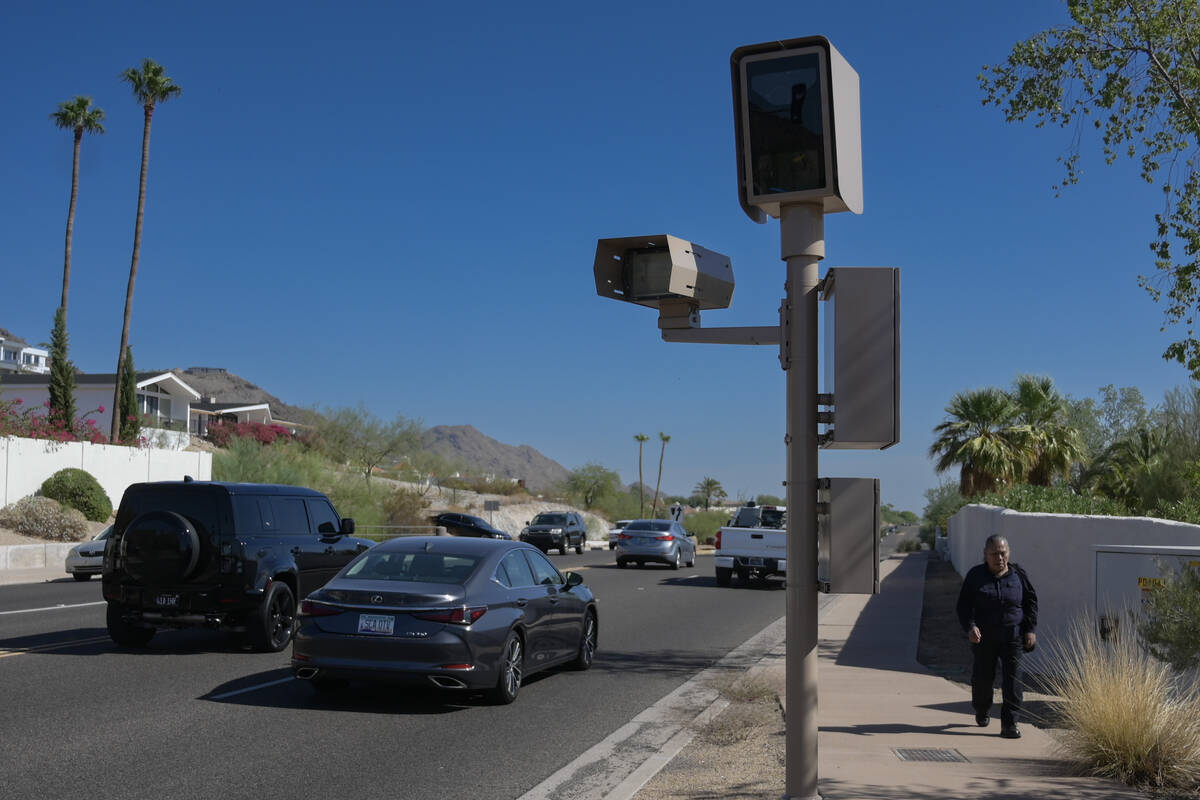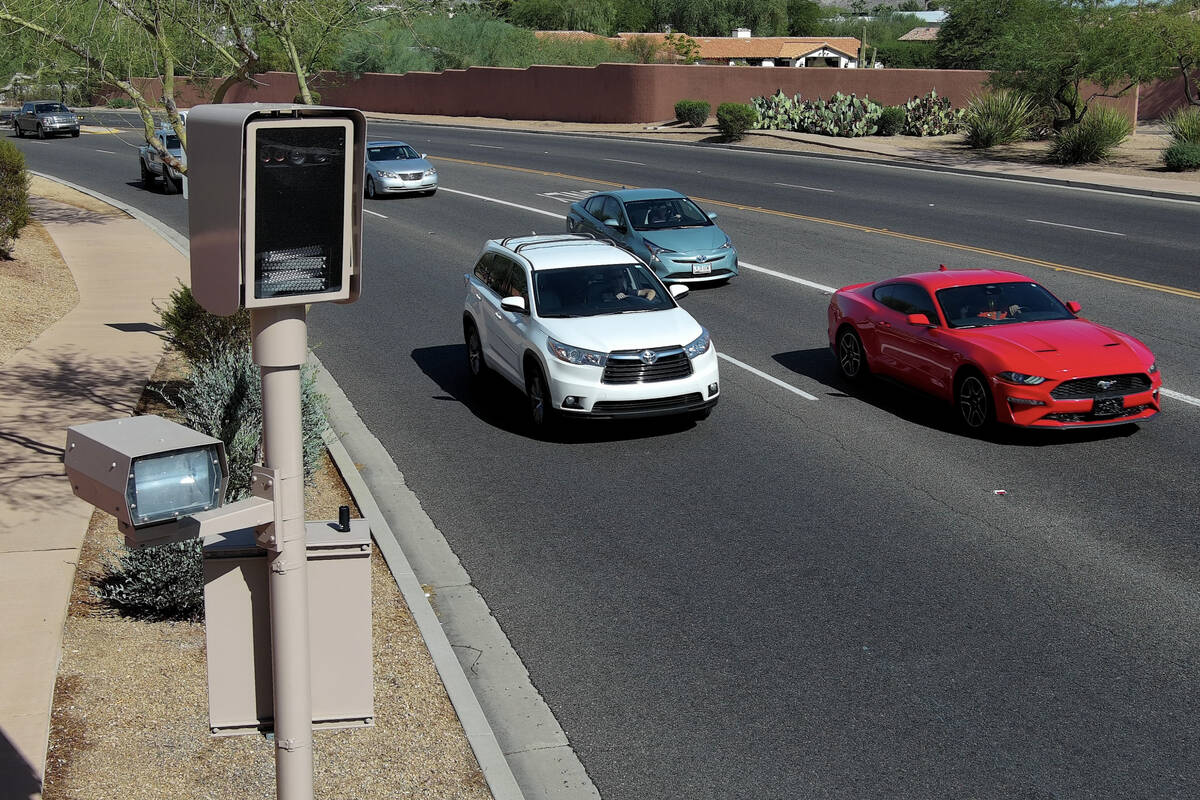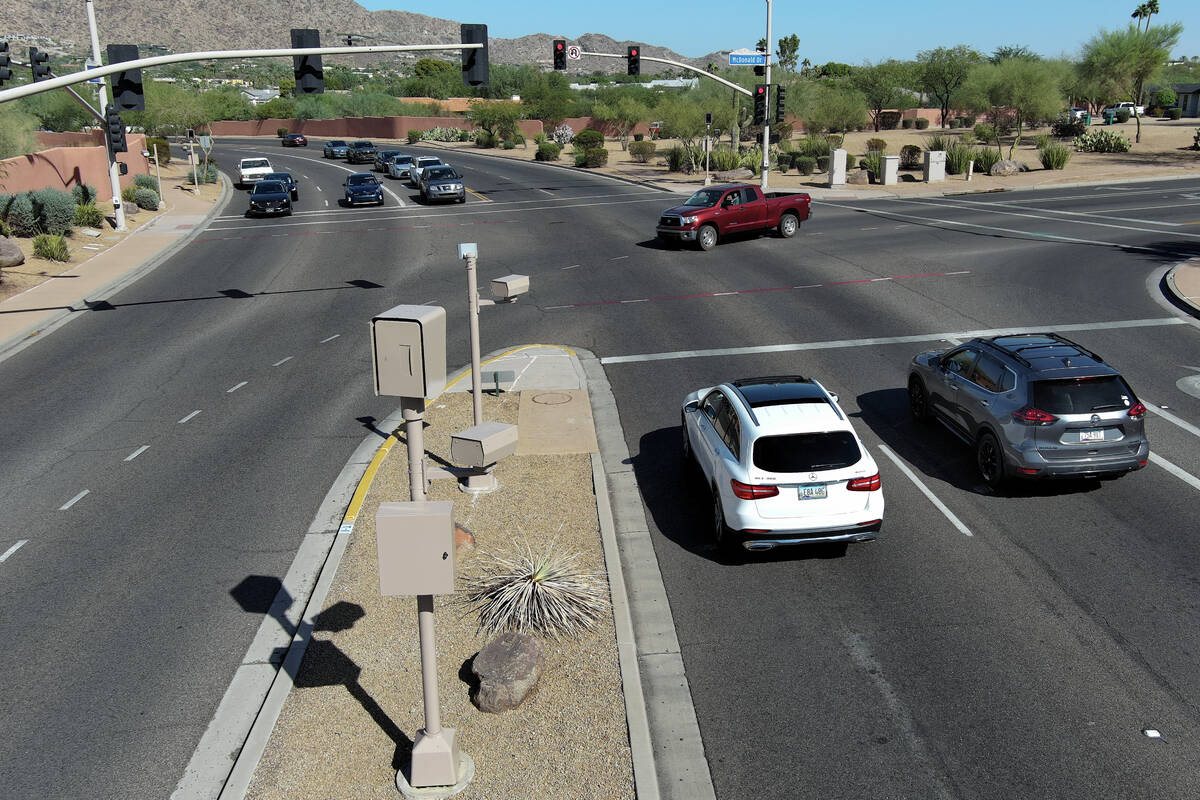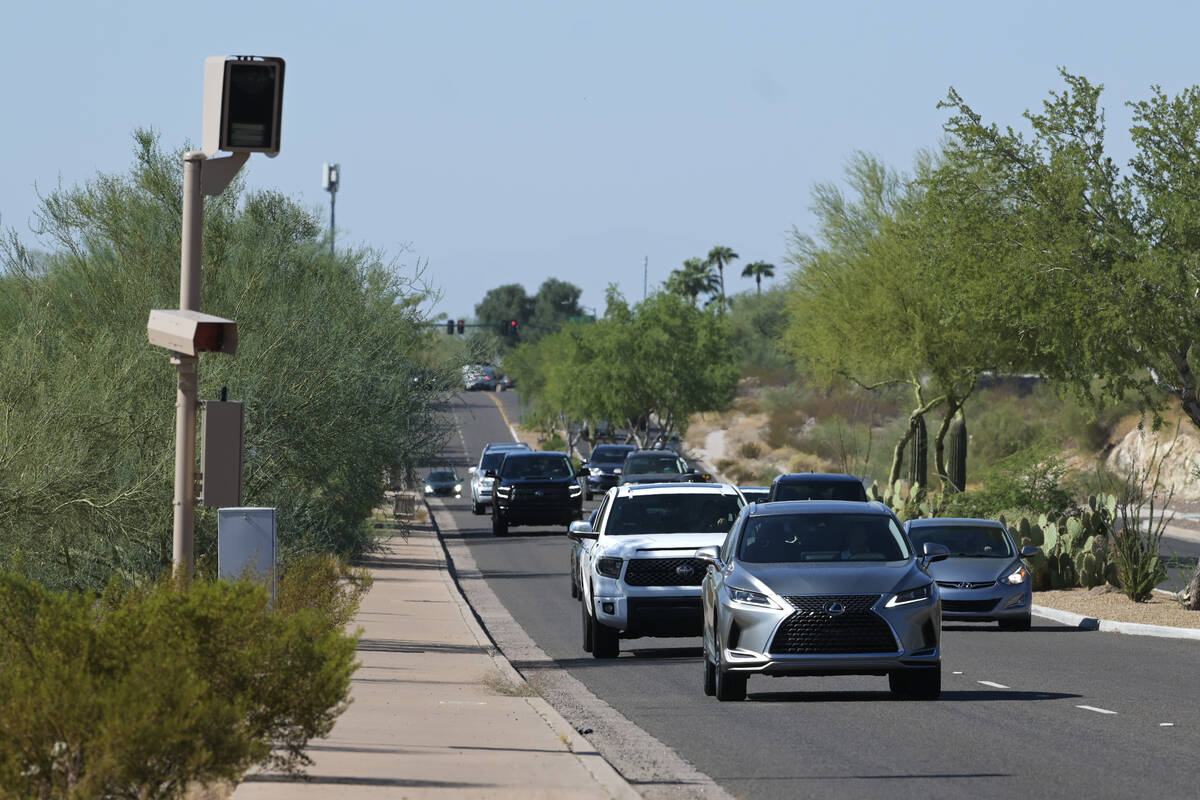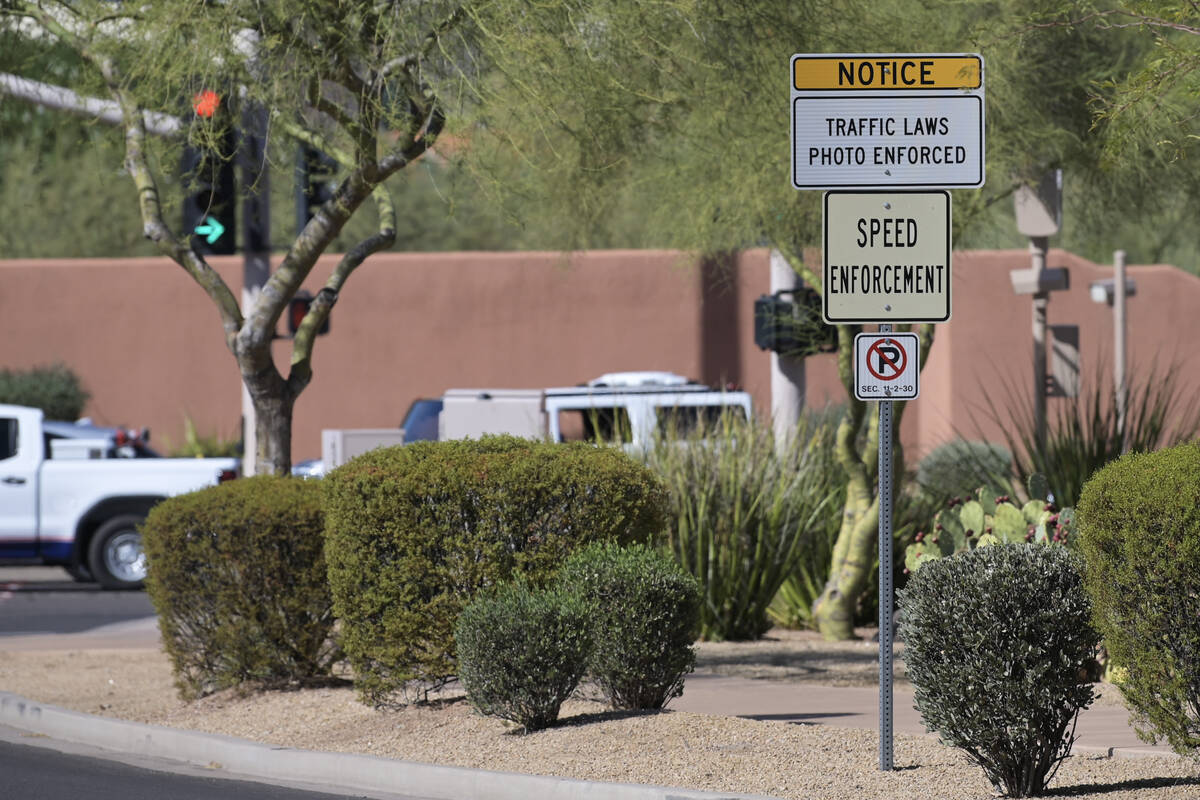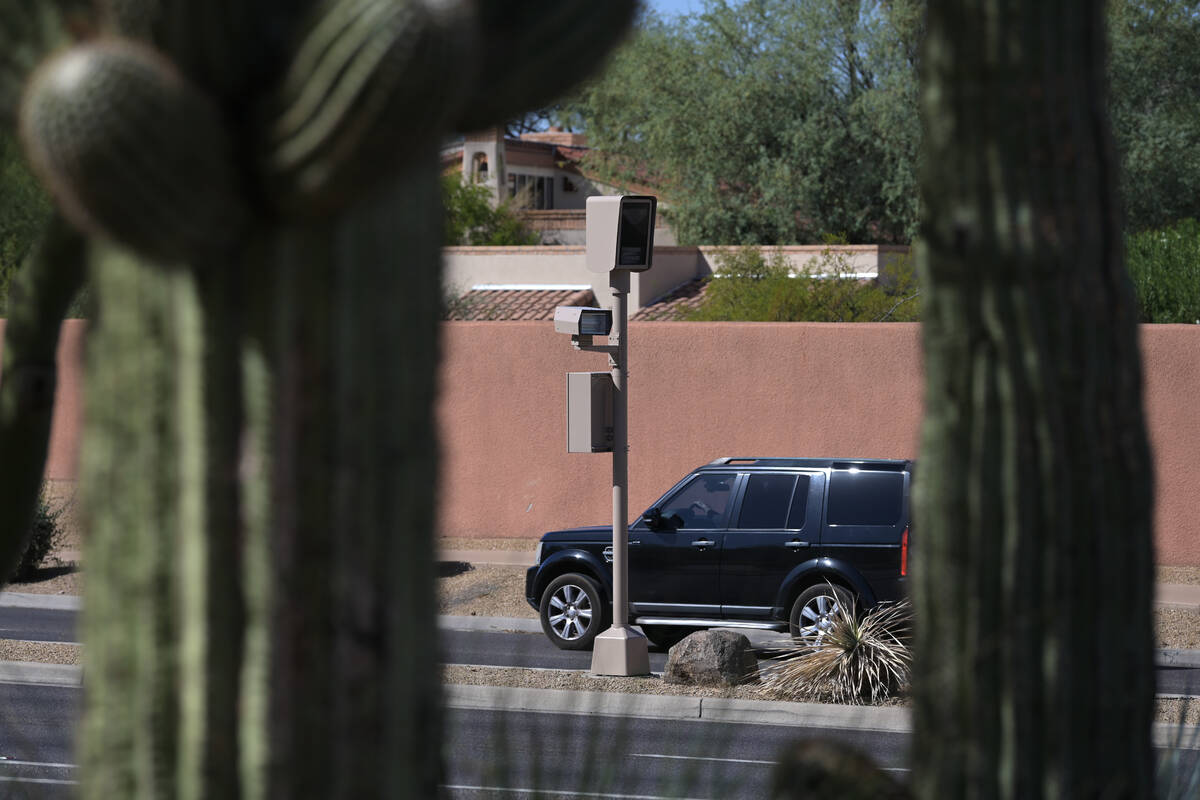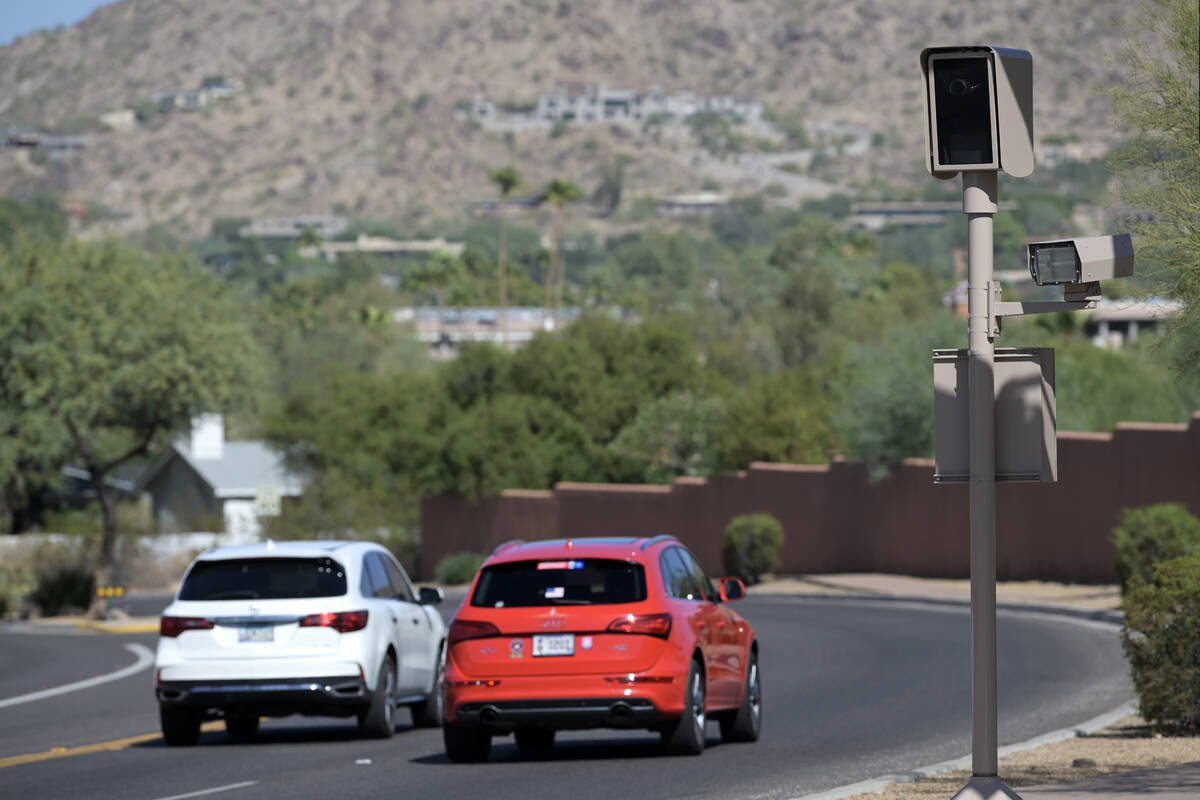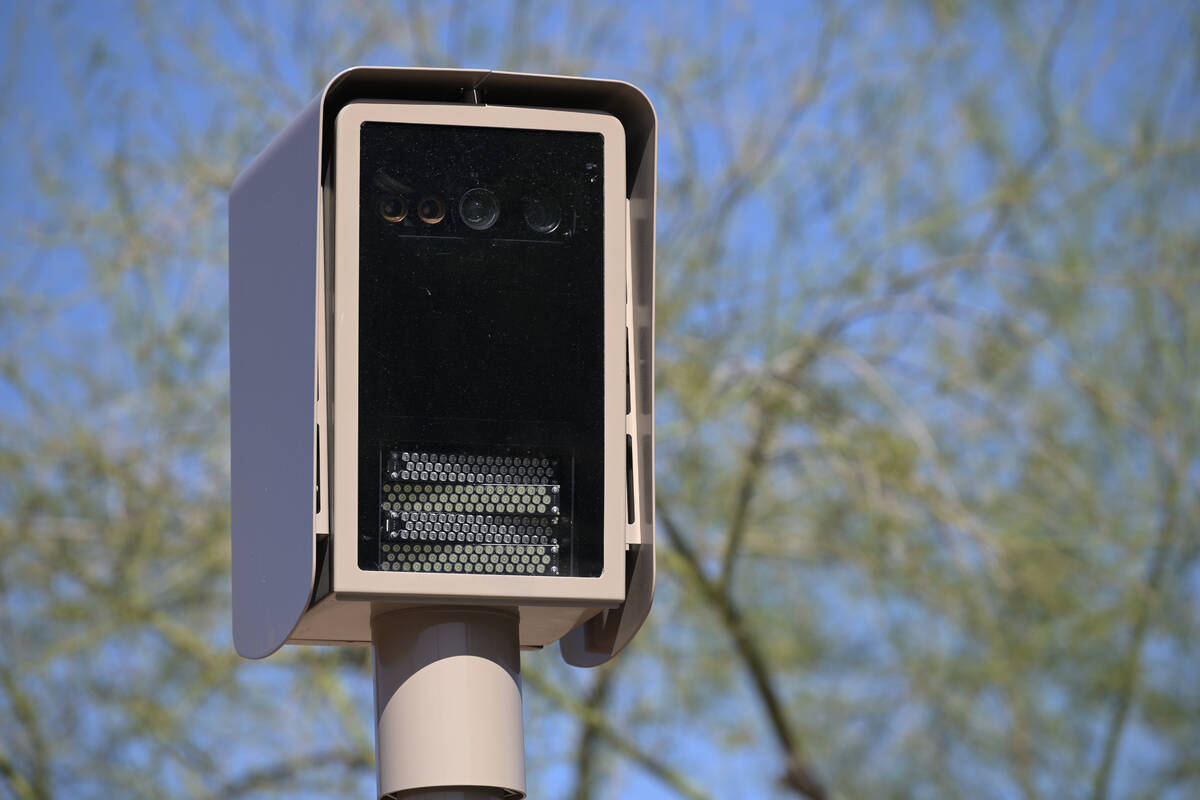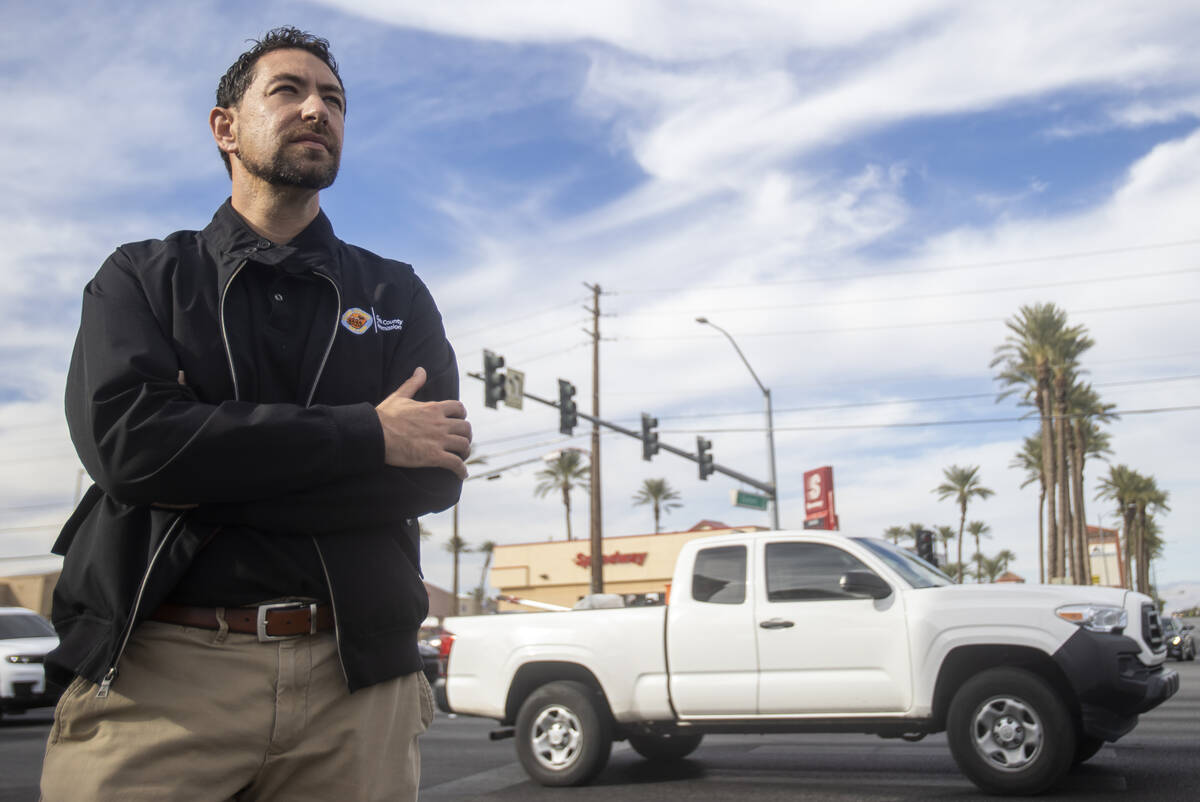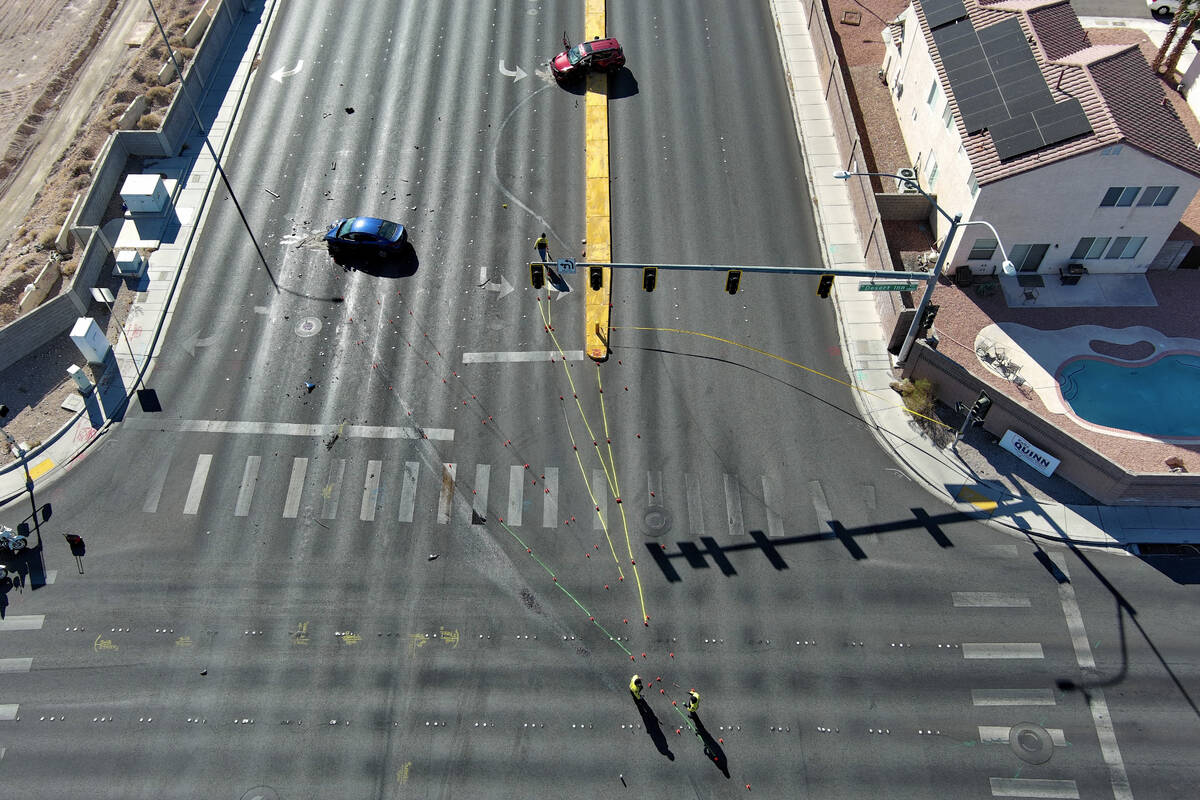Can traffic enforcement cameras reduce deadly crashes in Clark County?
Editor’s note: Part of an occasional series.
Facing increasing traffic fatalities, Clark County Sheriff Kevin McMahill hopes to persuade Nevada lawmakers to allow the use of traffic cameras to quell speeders and red light runners.
It’s a big ask in a state that has rejected traffic camera enforcement for the past two decades, but McMahill — who wants to start by adding red light cameras to the 20 “highest-collision” intersections in Clark County and build from there — said it’s time to act.
The Metropolitan Police Department recorded the 135th traffic fatality of 2024 in its jurisdiction on Thursday after a speeding stolen car blew through a red light at South Buffalo Drive and West Desert Inn Road and struck a car legally entering the intersection, killing its driver, police said.
Then, on Friday night, two kids were killed when another speeding stolen car ran a red light at Flamingo Road and Pecos-McLeod Interconnect, causing the fatal collision, police said. The driver of the stolen car fled on foot, and the children’s deaths became the 136th and 137th traffic fatalities in Metro’s jurisdiction this year.
The 138th traffic death in Metro’s jurisdiction this year happened Friday night on West Bonanza Road west of North Tonapah Drive when a 51-year-old man was killed after his motorcycle hit a median and he was thrown off the bike, police said.
The county is on pace to exceed the traffic death toll from 2023, with a significant increase in the number of fatal crashes involving speeding.
“When you have to go out and deal with that stuff over and over, it hurts the heart, mind, body and soul of the men and women that are out here doing this work. And for me, it’s just too much,” McMahill said.
Under Nevada law, it is not legal to use cameras to issue citations for driving violations. The 2025 Legislature would have to change that law to allow cities and counties to introduce enforcement cameras in their communities.
But beyond questions of privacy and equity that have surrounded traffic cameras ever since they were created, there’s a larger question: Do they help?
In communities around the country, the answer is yes.
By the numbers
A study by the Insurance Institute for Highway Safety and the National Conference of State Legislatures of 33 states that allow traffic safety cameras found that cameras at intersections reduced red light running by 21 percent and reduced the rate of fatal crashes at signalized intersections by 14 percent.
A Federal Highway Administration study supports that conclusion. It reported that red light cameras reduced fatal red-light-running crashes by 21 percent and all kinds of fatal crashes by 14 percent at intersections with traffic signals. The study noted that while red light cameras reduced side-impact crashes, rear-end crashes could increase, though they are usually less severe.
The study also said fixed traffic cameras that focus on a single area can prevent crashes on major arterials by 54 percent and reduce injury crashes by 47 percent. It showed that between 2015 and 2019, the number of drivers exceeding the speed limit by 10 mph or more fell by 59 percent when cameras were in use.
And in school zones, speed cameras reduced speeding during school hours by 63 percent, according to the highway administration.
Clark County Commissioner Michael Naft is sold on the idea.
“There have been endless studies on safety cameras, nationally and internationally, and the data bears out that they’re effective when implemented appropriately,” Naft said. “I have every reason to believe that would be the case here in Southern Nevada, that they would reduce the number of serious injuries and fatalities on our roadways.”
Not only would the cameras increase safety, they would also prove to potentially be financially beneficial to Clark County residents, Naft said.
“As you look at it through the lens of reducing the cost of auto insurance, which is becoming more and more unaffordable, having the ability to reduce that through increased enforcement, so long as equitably installed and protections are in place for privacy, I think it’s a no-brainer,” he said.
Phoenix brings back cameras
Southern Nevada isn’t the only area considering traffic cameras. Just last month, the Phoenix City Council voted to return red light cameras to the city, five years after they were removed because of concerns over privacy, effectiveness and discrimination.
“The Automated Enforcement Safety Program will be a valuable tool in our efforts to increase roadway safety,” Phoenix Vice Mayor Debra Stark said in a statement last month. “As Chair of the Transportation, Infrastructure and Planning City Council Subcommittee, I am proud that we are moving forward with a program that will continue our work in preventing traffic fatalities while complementing the work of our Vision Zero Plan and without requiring additional staffing from Phoenix Police.”
The first year of the program will see 10 red light enforcement cameras added at select intersections and four mobile vehicles and four portable tower speed enforcement cameras that will be shifted around the city to areas with speeding-related crashes and those known to have speeders, including within school zones, the city said.
The program’s goal is not to generate revenue, but to alter driver behavior and aid Phoenix police in their traffic safety enforcement efforts. The program will run on a cost-recovery model, with revenue generated by citations used to offset costs to the city and vendors. Any excess revenue will be put toward traffic safety programs.
In 1987, the nearby Arizona community of Paradise Valley became the first city in the nation to install traffic enforcement cameras after more than 400 crashes in the town of just over 12,000 people. After the first cameras were installed, crashes decreased by 42 percent, according to the Paradise Valley Police Department.
In 2013, a public safety task force asked for more enforcement cameras. In 2017, after the addition of more cameras, there were 207 reported crashes — a 50 percent reduction from the initial numbers reported over 30 years earlier in the growing area.
Washington, D.C., ups cameras
Traffic camera enforcement works on a larger scale in Washington, D.C. The federal district now has 477 traffic cameras, including 213 speed cameras, 140 clear-lane cameras on school buses, 56 red light cameras and 33 stop-sign cameras. In the 12 months ending last month, those cameras issued 3.1 million citations, according to the District Department of Transportation.
The department said it is still too early to realize the full impact of the increased traffic safety cameras, but plans call for a review in the near term.
“As part of our Vision Zero goal, D.C.’s aim is to eliminate all traffic-related fatalities and severe injuries on District roadways,” an agency spokesperson told the Review-Journal in an email. “The District’s ATE program is a state of the art, data-driven safety countermeasure that acts as an important layer in a larger safety system. Data proves that these cameras slow drivers down and reduce injury crashes by 30 percent.”
The department said most cameras installed as part of the recent increase were initiated via resident requests tied to concerns about safety in their neighborhoods.
In September alone, 289,539 violations were captured by traffic safety cameras in D.C., with speeding violations making up 76 percent of those violations, red light runners at 9 percent, stop-sign runners at 8 percent and clear-lane (bus) cameras making up 6 percent of the monthly total.
Multiple jurisdictions, including Baltimore and Philadelphia, have contacted the district to seek advice about potentially starting similar programs, according to the agency.
Local efforts track red light running
A Clark County Regional Transportation Commission pilot project this year highlighted the problem of red light running by tracking eight high-risk intersections across the Las Vegas Valley using AI, cameras, sensors, predictive analytics and historical data.
In February, the project, in collaboration with the Henderson Police Department, identified more than 14,000 red-light-running instances at the intersection of Green Valley Parkway and the 215 Beltway.
With that data, Henderson Police conducted a six-hour enforcement period at the intersection in April, leading to 77 citations given to red light runners.
During a single week of tracking traffic behaviors at the intersection of Spring Mountain Road and Rainbow Boulevard, the program identified 1,411 red light violations.
With all the data pointing to the benefits of installing the various traffic cameras, Naft said there is no reason why they shouldn’t be added in Southern Nevada.
“I can’t emphasize this enough: the data is there,” Naft said. “There’s academic reviews. There’s law enforcement reviews and even (reviews) from criminal justice reform organizations. This is a true win. When we’re so desperately trying to reduce fatalities on our roadways, you can’t leave any stone unturned.”
Contact Mick Akers at makers@reviewjournal.com or 702-387-2920. Follow @mickakers on X.
Read the entire Review-Journal series on traffic enforcement cameras
Is it time for red-light cameras in Las Vegas? The sheriff thinks so
Traffic camera bill could face an uphill battle in Nevada Legislature
Parents of kids killed by reckless drivers say they support red-light cameras
Red light cameras highlight county commissioners' wish list
Sheriff wants both red-light, speed cameras in Las Vegas



